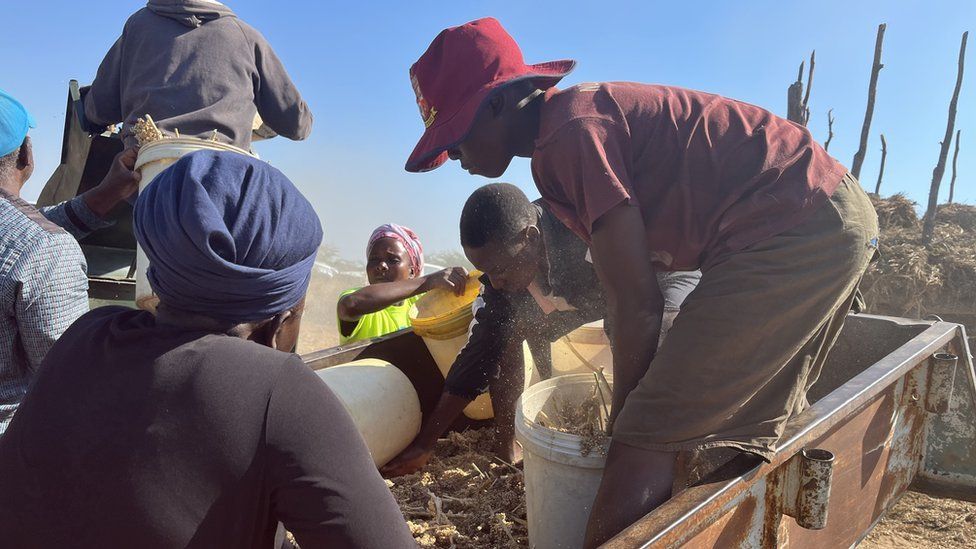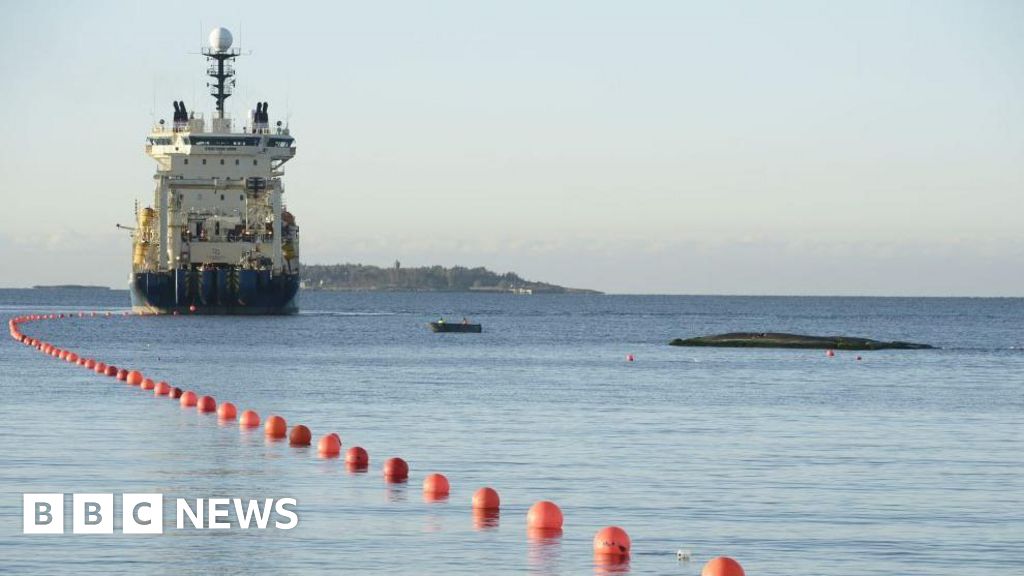ARTICLE AD BOX
By Shingai Nyoka
BBC News, Harare

In what would have been unthinkable a few years ago, the Svosve family in north-eastern Zimbabwe is ditching maize for indigenous grains in order to overcome persistent drought and food shortages.
This is despite the fact that maize is second only to water in importance in the average Zimbabwean household.
It is not only a staple and a status symbol for farmers, but also an important cash crop.
But low yields have forced the Svosves, who are subsistence farmers, to focus more on growing sorghum and millet - both of which were staples before Portuguese traders in the 1500s brought maize from the Americas, according to historians.
When I visited the Svosves at their homestead in Mduzi, a semi-arid area with grey-coloured stony soil, members of the family were crowded around a threshing machine spitting out buckets of grain.
Family head Lovemore Svosve said they would have plenty to eat, even though the rainy season was disastrous.
"We planted a sizeable maize crop as well as sorghum and millet. But we got nothing from the maize. It was scorched after there was no rain for three months. We harvested just the traditional grains," he said.
One of his wives, Rose Karina, brought out a small black pot with a few maize cobs in it. That was all they harvested from 10kg of maize seed and more than 100kg of fertiliser.
In comparison, stacked on their veranda were many sacks of sorghum. They were able to get more than one tonne from five kilogrammes of seed and fertiliser.
"We aren't planting maize again. I don't know how anyone in this area can after the last season," she said, shaking her head.
Sorghum is more nutritious than maize
Her comment would raise the eyebrows of most Zimbabweans, but the need to once again grow traditional grains is highlighted by the fact that some four million people are in need of food aid and about 400,000 tonnes of maize will have to be imported this year.
Food scarcity is compounded by the fact that the economy is in a perilous state, with annual inflation rising to 191% in June, as Zimbabwe felt the effects of the cost-of-living crisis triggered by a series of global issues, including the war in Ukraine.
The price of maize and another staple, wheat, has gone up by more than 50% since the war started in January.
The prices for fertiliser raw materials have also tripled, causing a further problem as Zimbabwe is heavily reliant on fertiliser from Russia.
As a result of all this, farmers are being encouraged by the government and the the UN's Development Programme (UNDP) to plant more traditional crops, as they require less fertiliser, are more drought-resistant and nutritious.
"I don't have a crystal ball but if you look at what we know today in terms of climate impact, the war on Ukraine, the disrupted supply chains, and the need for a nation to be self-reliant, then that is the way to go," said Mia Seppo, the UNDP's Zimbabwe representative.
Getty
There has been a resurgence in the popularity of quinoa. My hope is that Zimbabwe's indigenous grains will also become fashionable again"
But there are numerous obstacles to overcome - including the fact that production of the traditional grains is still very low with few farmers taking it up. Only 377,000 metric tonnes were produced last year, compared to 2.7 million metric tonnes of maize.
To increase productivity, the UNDP is helping to roll-out threshing machines.
The Svosves say their machine - which they share with other families in their community - has made a huge difference, reducing the threshing time to less than an hour. It would have taken several months if it was done manually.
Seeing the Svosves as a model of success, Ms Seppo said traditional foods could make a big come-back in Zimbabwe, just as they have in other parts of the world.
"There has been a resurgence in the popularity of quinoa, the ancient superfood originating from South America. My hope is that Zimbabwe's indigenous grains will also become fashionable again," she said.

 2 years ago
32
2 years ago
32








 English (US)
English (US)